For more than a century, Staten Island has been New York City’s dumping grounds for garbage, bodies and the poor and homeless. From 1947 to 2001, it was home to Fresh Kills landfill, which at one time was the largest landfill in the world. Yeah, the world. In a city where we all live on top of each other and a single subway ride results in prolonged shoulder touching, uncomfortably intimate hand grazing, and the “accidental” boob bump, we had room for the world’s largest pile of trash. At one point, the pile was taller than the Statue of Liberty. The landfill closed permanently after receiving the World Trade Center rubble from 9-11, from which human remains are still being unearthed. Most of Fresh Kills landfill has been capped and covered and will soon open as a city park.
Just south of the Fresh Kills, along Arthur Kill road in Rossville, you’ll find the boat graveyard. The area is known by a number of names, the original being the Witte Marine Shipyard, the latest being the decidedly less eloquent Donjon Iron and Metal Scrap Processing Facility. Google Maps identifies it as the Arthur Kill Ship Graveyard and the word-of-mouth titles are the Staten Island boat graveyard or the tugboat graveyard.
The graveyard consists of decommissioned boats- ranging from warships to giant passenger ferries to dinghies- that are permanently moored in a highly polluted stretch of riverbed along Arthur Kill waterway. Unsalvageable boats used to be dragged out and sunk, but now the remaining boats are slowly rotting into the river.
In the 1960s, Witte’s Marine Equipment Company began acquiring discarded boats for salvage. At its peak, the waterway housed 400 boats, many of which were still intact, by the order John J. Witte, who owned the graveyard until his death in 1980. When the property was turned over to Donjon Marine Company, a wall was erected along the shore and most of the boats were dismantled, to either salvage parts or to be sunk in the river. The estimate for boats remaining in 2013 is a little over two dozen.

Google Maps image of the boatyard before Hurricane Sandy, which sank many of the boats visible in this screenshot. Scrapping also demolished/sank many boats.
Many of the boats are just old, anonymous tugboats, but a few are somewhat famous, such as the Abram S. Hewitt fireboat. Operational from 1903-1958, the boat’s claim to fame was assisting in the famous shipwreck of the PS. General Slocum in 1904. The passenger ferry was making its annual trek to a picnic site on Long Island when it caught fire. A series of careless mishaps -such as rotted fire hoses, misplaced flammable liquids, cheap rescue equipment, and inaccessible lifeboats- led to the death of over 1,000 passengers, mostly women and children. Many victims’ bodies washed ashore on North Brother Island, which is a mecca of exploring I will most likely never get to and it drives me nuts. If you own a boat and/or have any sway with the city’s parks and rec department, contact me!
The Abram S. Hewitt in it’s heyday. I was unable to find it in any of my photos. Most likely it has sunk, but if not, feel free to let me know. POLITELY please. Turns out some people are real tools when they’re pointing out mistakes on the internet.
Above is the Bloxom, a 1944 tugboat built in West Virginia for the US Army, in the 1940’s and today. Don’t google that boat or an hour later you’ll find yourself balls deep in weird boat nerd forums run by everybody’s grandpas who barely know how to use the internet and then you’ll get the same feeling you get after listening to your old man talk about The War all night. Here it is when it was afloat:
To the left of the Bluxom is the New Bedford. (Above) Built in 1928, it served as a hospital ship in the Battle of Normandy.
The latest addition is the 168 foot water tanker, John B Caddell, which was pushed onto Front Street during Hurricane Sandy. Here, watch this funny news clip where the reporter says, “this is a tanker that has run aground,” and anchor asks incredulously, “are you kidding?” to which the reporter responds with sincerity, “No.” I watched it like four times because I’m an asshole.
My favorite part of the boat graveyard isn’t even in the water, it’s the old wheelhouse that sits on land, a few yards from the shore. A wheelhouse is an enclosed unit where the wheel of the ship is located, although most modern boats don’t have them anymore. I’ve visited in the winter and summer, but on this last trek, the wheelhouse was obscured by a freight truck that appeared to have been knocked over by the hurricane. Here’s the inside of the wheelhouse:
Hurricane Sandy really changed the landscape of the shipyard. Boats have always been slowly sinking into the water, but it appears the hurricane quickly destroyed/sunk many of the more fragile boat skeletons.
A New York State Port Authority ferry boat. (Above)
The most commonly photographed ship is the Hila (above) a US Navy rescue tug used in WWII.
The boat graveyard has been visited and photographed aplenty, but I’m pretty sure I’m the only idiot who went out there in the middle of a snowstorm last winter to take a bunch of crappy photos.
Many websites claim it’s difficult to access and explore the shipyard, but that’s ridiculous. It’s very easy, but it’s very dirty. First, you walk through the tiny Sleight Family Graveyard, where some headstones date back to the 1700s. Beyond the graveyard is a mostly obscured pathway that leads to a reedy marshland. When facing the water, right in front of you are a few large boats, but the hub of the boatyard is to your left, beyond a small creek and shrubbery-covered hill. There are paths to follow through the reeds and bits of wood, but don’t go clomping through like a jerk, because these lil’ guys live there too. Except I think that crab is dead.
It’s really muddy, but if you wear old sneakers or boots, you’ll be fine. That is, as long as you just want to snap a few shots from the shore. It does get a little tricky if you venture down the riverbank, further south past the recycling plant, or out into the muck at low tide to get a closer look at the boats. Waders would be an optimum choice for this excursion, although tall rain boots will do. Don’t wear those precious little L.L Bean duck boots everyone has just because they’re cute, and if you wear sneakers, just know it’ll be the last time you ever wear them. The mud is a toxic sludge due to the oil, paint, rust, etc, and smells like a thousand farts. It is, after all, a dump. A literal dump for giant garbage.
This is the end of the line for those on foot, or at least it was for me because by this point I was just done. You could avoid this whole kerfuffle and kayak out there, which many people have done. If you get this far and don’t want to turn around and trudge all the way back, you’ll be bummed to discover that the recycling plant blocks all exits. However, if you just follow the creek at the end of the makeshift bridge (pictured above) and go through the tunnel and climb up onto the road and make haste back to your car.
I’m sure the recycling plant and the NYPD would like me to note that all of this is definitely considered trespassing, but being that the ship graveyard was once featured in some British tour guide, I highly doubt you’ll get in trouble. Plus everybody goes here, it’s like the Farm Colony of the river.
Addendum: Some updated photos from 2015 at low tide. Some boats have moved around a bit, and the main boat that pushes boats into their resting place can be seen behind the Hilda.
To see more photos, go to the Witte Marine Scrapyard flickr set.
Disclaimer: If any information is incorrect, if you have more info, or if you’d just like to tell me something, feel free to contact me.
To support my work and see new comics, go here. To buy books, original artwork, merch, and more, visit my website store. Follow me on instagram.
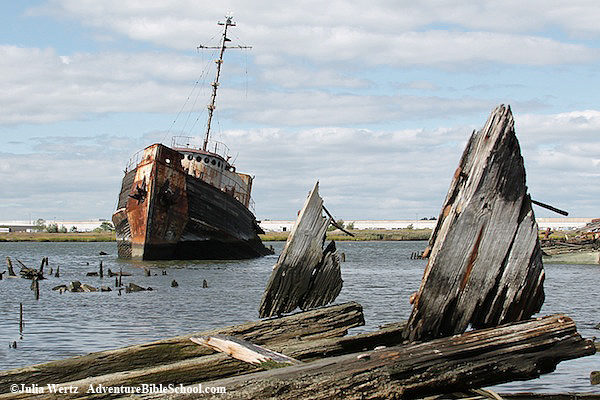
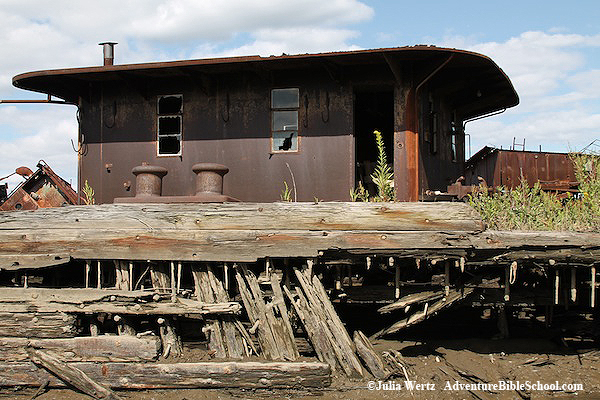

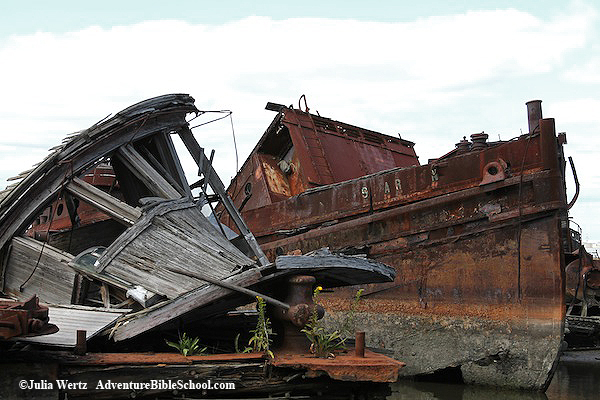
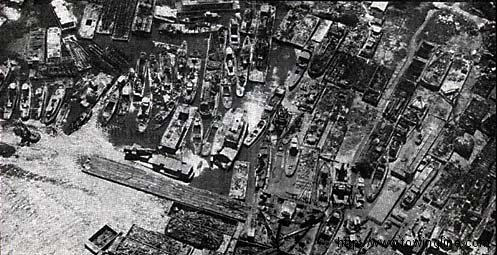
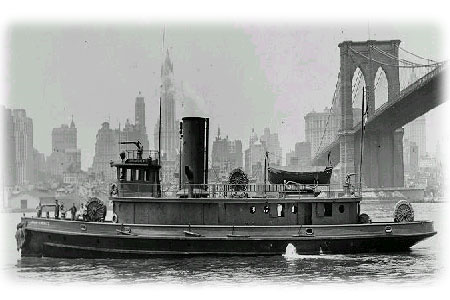
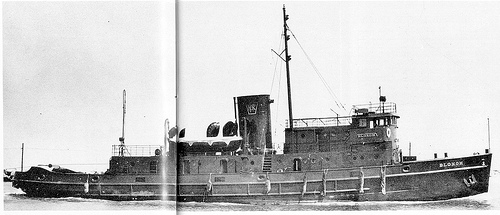
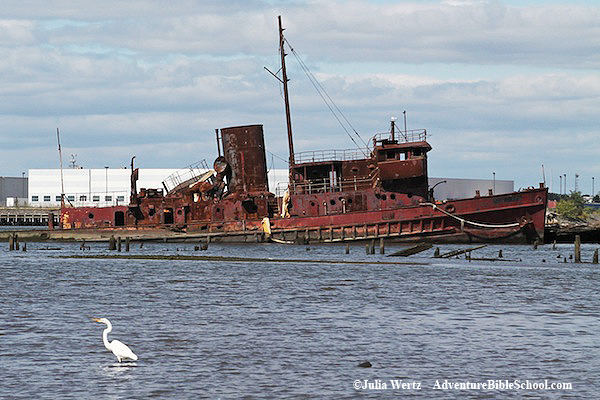
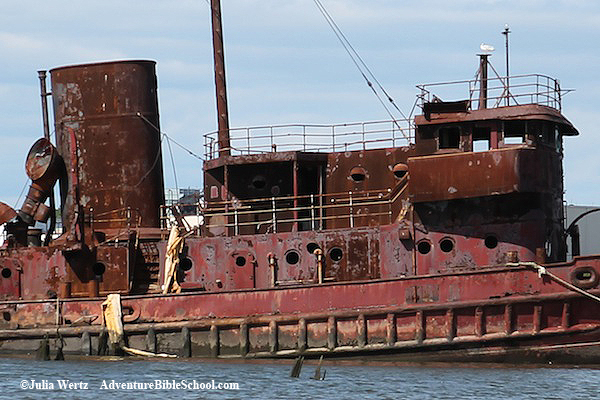
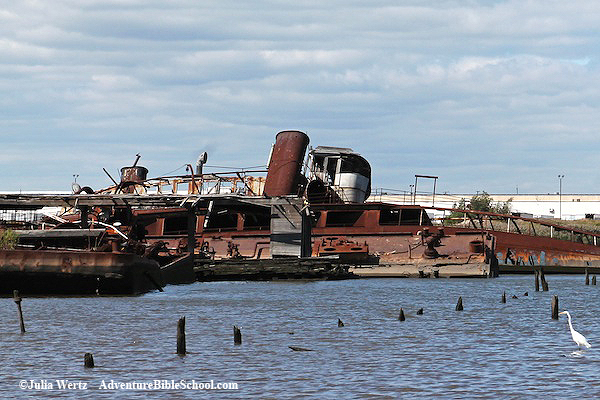
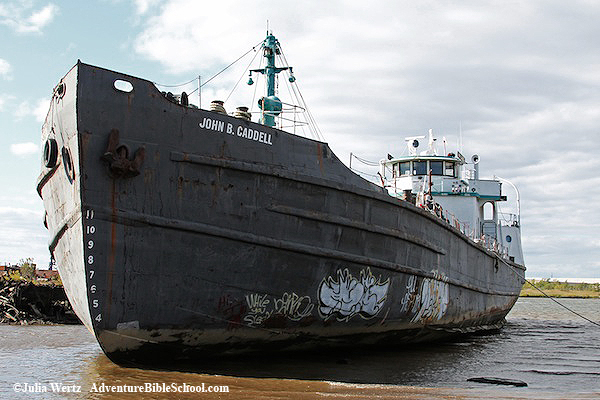

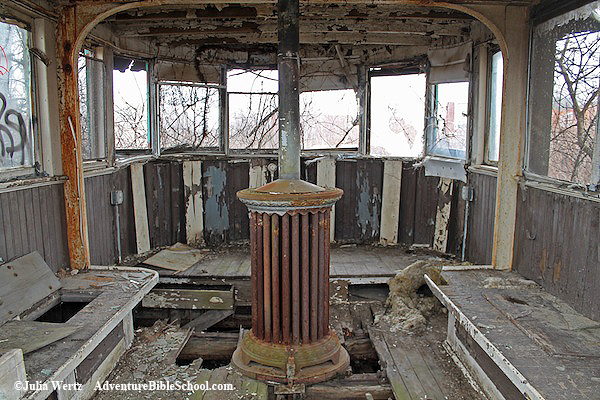


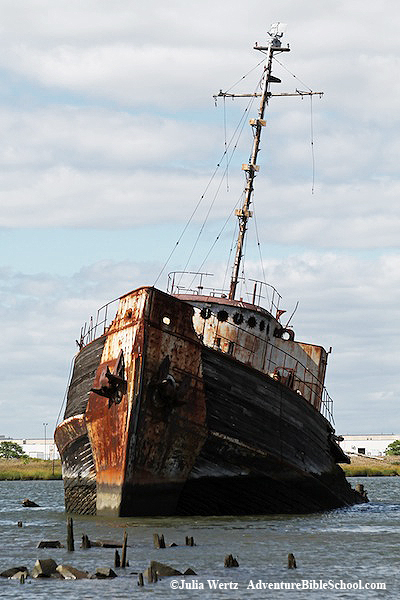
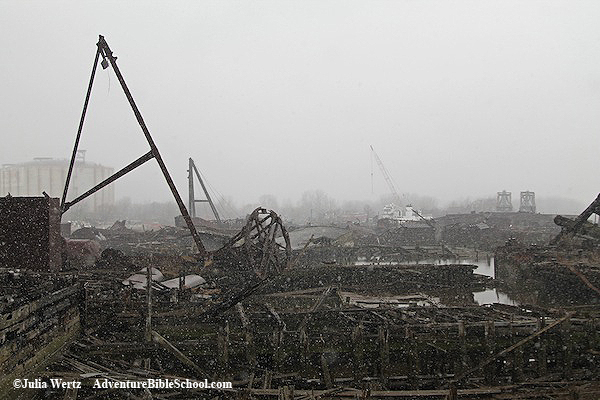


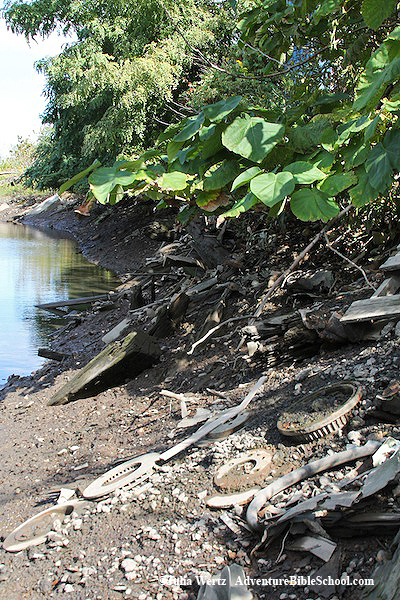
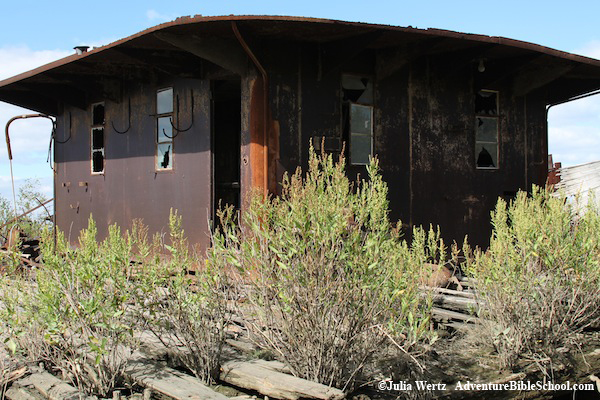
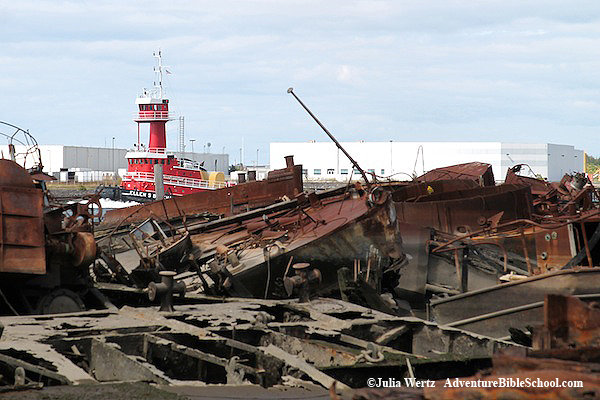



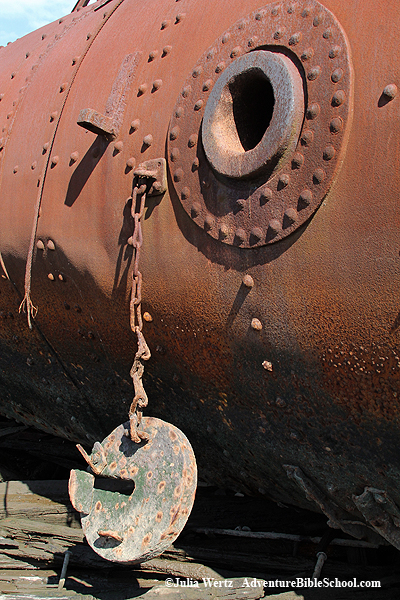
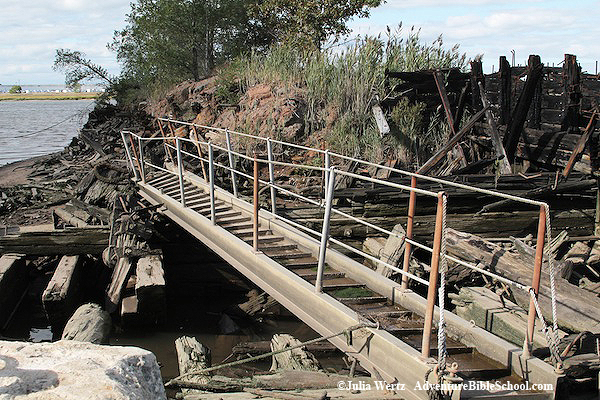
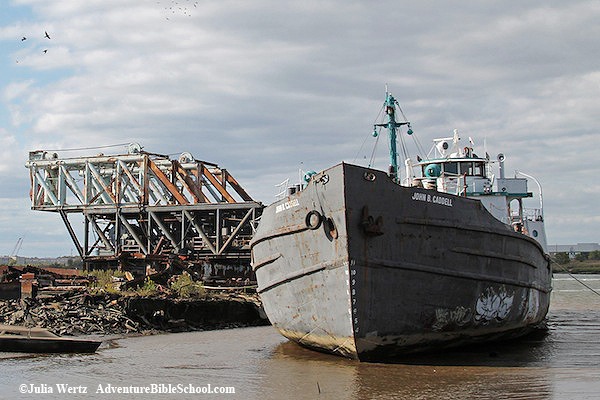
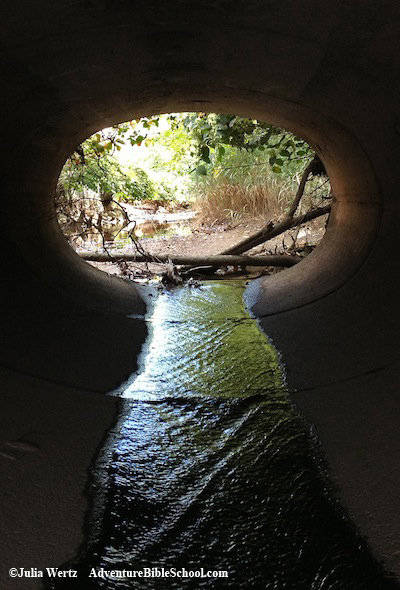







Sorry, the comment form is closed at this time.